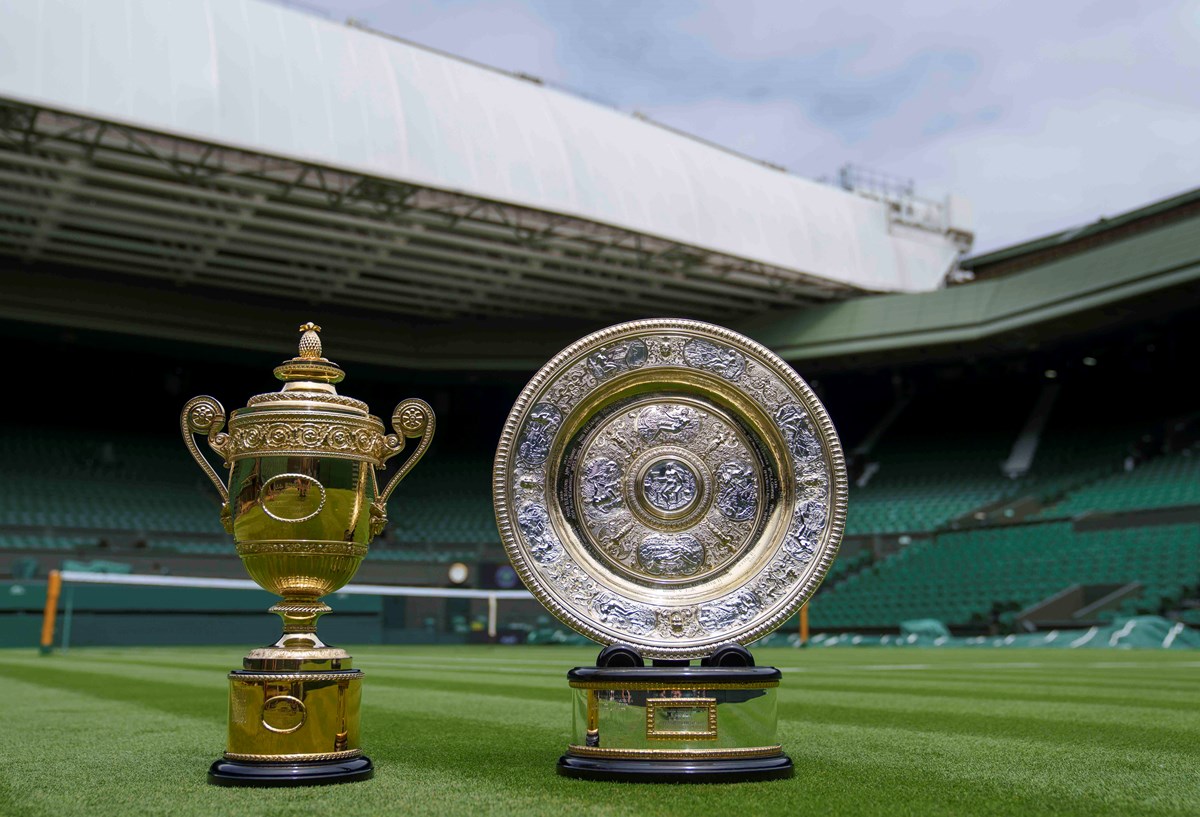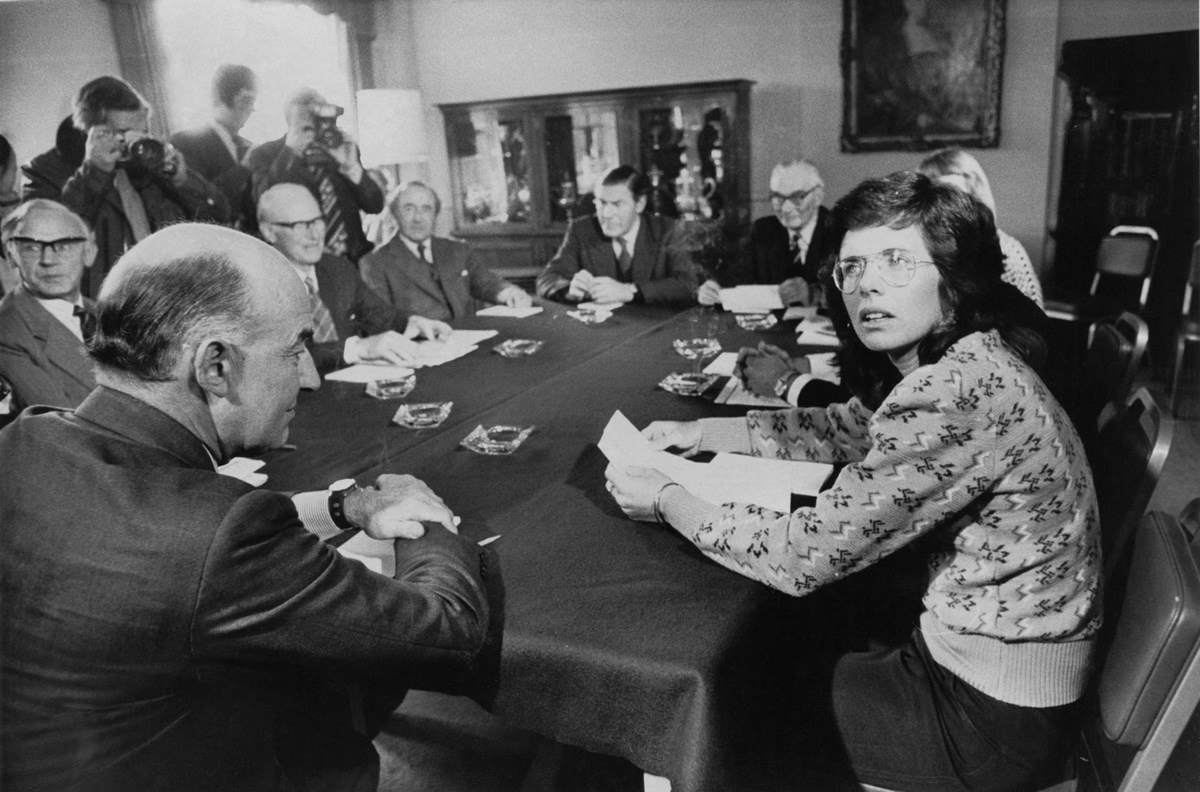History of tennis | When was it invented, tennis scoring & the professional era
What is tennis?
Tennis is a fun, exciting sport that anyone can play – no matter your age, background or ability.
Tennis is a racket sport played between either two people (singles) or two teams of two (doubles) people, where you’re aiming to hit a ball over the net to your opponents.
The goal is to win as many points as you can by hitting the ball so your opponent can’t return it, or they make a mistake.
There are thousands of courts located across Great Britain – including many in local parks – that are easy to book and play.
It’s a fantastic sport to help stay healthy, improve your fitness, and has a wide range of mental and social benefits as well.
It’s a sport with a rich history, dating back almost a thousand years and with more chapters being written every year. Learn more about the history of tennis below.
What is the history of tennis?
While tennis has deep routed connections with games played in ancient Egypt and Greece, the origins of the sport we know and love today began in France during the 12th century.
In fact, the word ‘tennis’ comes from the French word ‘tenez’, meaning ‘be ready’, which players would shout before serving.
Tennis started as a handball game called ‘jeu de paume’, played by French monks. In this game, players would hit the ball to each other over a rope or against the walls of the monastery.
Over the years to come, the sport became more and more popular – particularly with the French royal court – and the game continued to grow and develop over time. By the 16th century, players started to use wooden paddles instead of their hands – the very first examples of
At this time, tennis had made its way on to British shores and King Henry VIII was well-known for his love of a more formalised version of the sport – court or real tennis – and built his own court at Hampton Court Palace, which is still there today. Real tennis was played on indoor courts, often with galleries on either side, and a net through the middle.
Everything changed again in the 19th century, with the creation of lawn tennis – played outdoors on grass courts. In 1873, Major Walter Clopton Wingfield, an Officer in the British Army was the first to introduce lawn tennis and even created an equipment set that people could buy to play in their gardens.

The All England Lawn Tennis and Croquet Club (AELTC) was established in 1877, and with it, the first edition of The Championships, Wimbledon. This would be the first of the four Grand Slam events, with the US Open starting in 1881, French Open in 1891 and the Australian Open in 1905.
This kick-started a trend across the world as more and more countries started to adopt lawn tennis – especially in France, USA and Australia, forming the four Grand Slam nations.
The LTA (the Lawn Tennis Association) was founded shortly after in 1888 to govern and maintain the standards of tennis throughout Great Britain, the Channel Islands and the Isle of Man. Today the LTA’s mission is to transform communities through tennis by making it welcoming, enjoyable and inspiring to everyone, with a vision of ‘Tennis Opened Up.”
What is the history of tennis scoring?
One theory is that tennis scoring comes from French medieval times where people would use a clock face to keep score for 15, 30 and 45. When the hand of the clock moved to 60, the game was won.
Later down the line, 45 was changed to 40 to ensure that a game couldn’t be won by a one point difference if the scores were tied. This was later called ‘deuce’ – when the game reached 40-40.
The first player to win a point at deuce, the clock moved forward by 10 and if they won the next point, they won the game. This would later be called ‘advantage’.
Another theory is that tennis scoring originates from jeu de paume. In this game, the court was 45 feet long and players would serve from different distances after winning a point. If they won one point in the game, they would move forward 15 feet, win a second point and they would move 15 feet forward again (30 feet) and after a third point, 10 feet forward (40 feet).
When did tennis become a professional sport?
The first concept of professional tennis was set up by American businessman Charles C. Pyle in 1926, which included many American and French stars from that period, including Suzanne Lenglen, which continued into the 1960s with more and more players trying to earn a living from playing the sport. The players competed in exhibition matches to paying audiences, but as a result, weren’t allowed to enter the Grand Slams, which were considered amateur events.
Finally, this era ended when the AELTC ran a test event with the BBC at Wimbledon in August 1967 and the following spring, the LTA (led by chair Derek Hardwick) became the first tennis nation in the world to stage a fully Open tournament. This event was held at The West Hants Club in Bournemouth in April 1968 and was the first tournament to officially offer prize money and welcomed amateurs and pros alike.
The early years of professional tennis were fraught and very turbulent. Other member nations were reluctant to acknowledge the contract pros and then in September 1970, a group of leading women the “Original Nine” decided to break away from the men due to the increasing difference in prize money between the two genders.

What is the history of tennis rackets?
The first tennis rackets were created in the 16th century for people playing Real Tennis. They were wooden paddles used to hit the ball.
Over the years, rackets have continued to develop. Early lawn tennis rackets also had wooden frames, with a long beam and smaller racket head and strings.
In 1957, we saw the first metal tennis racket, which grew in popularity over the next 20 years despite being heavier. The metal racket provided more power than it’s wooden rivals and soon became the racket of choice for the pros.
In the late 1970s and early 1980s, graphite tennis rackets took over. Graphite rackets were lighter but still produced similar power to their metal counterparts,
Graphite rackets are still used today, with tennis racket manufacturers finding new technologies and ways to make improvements across different areas of the game – control, spin and power.
